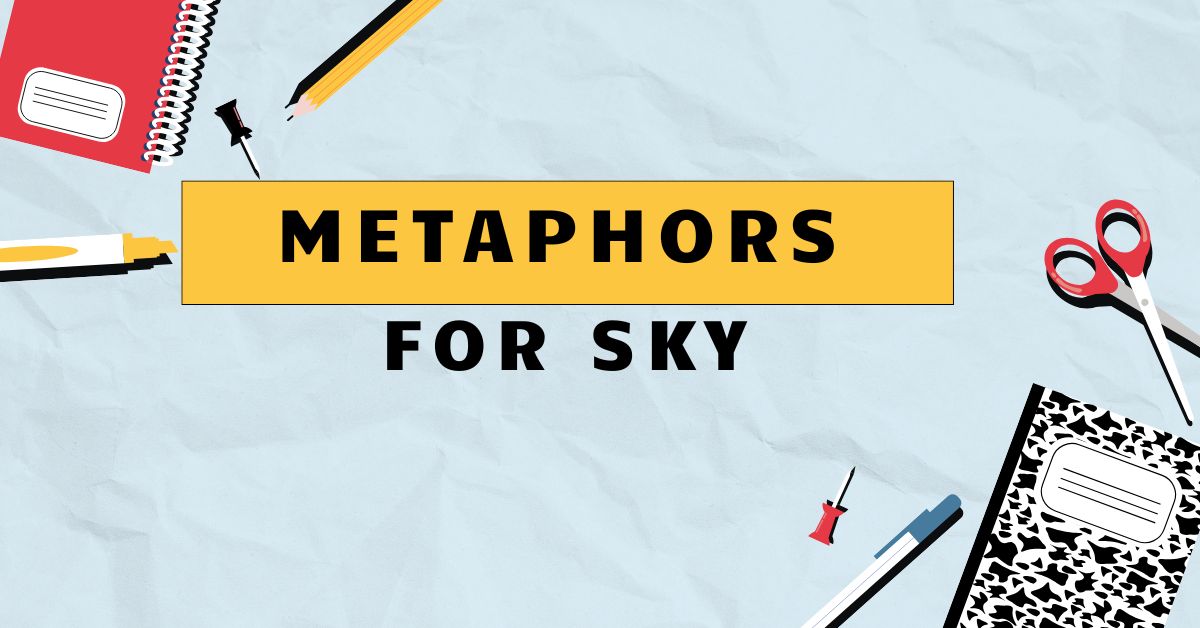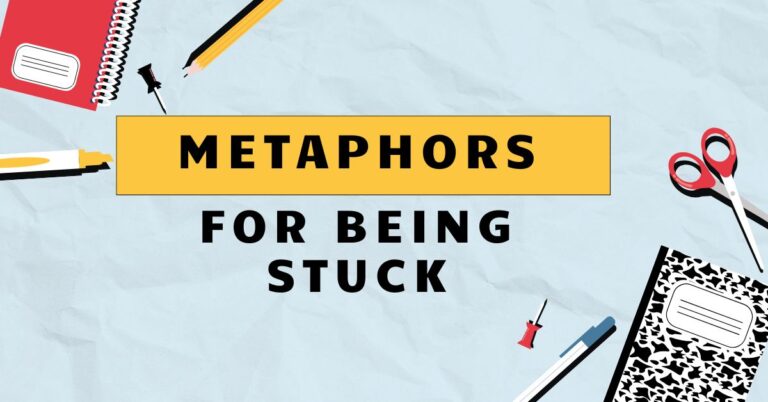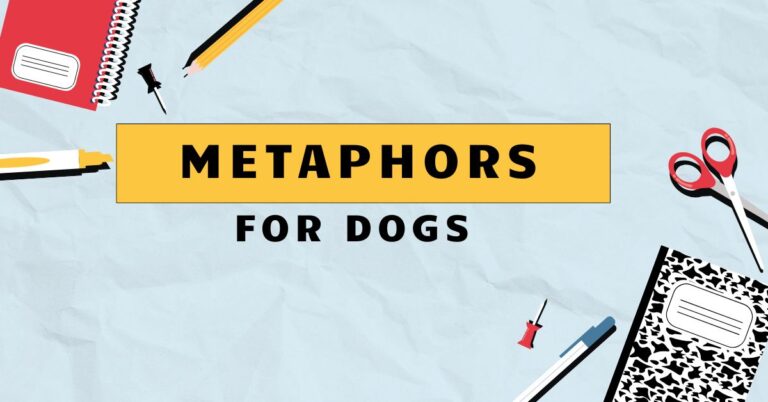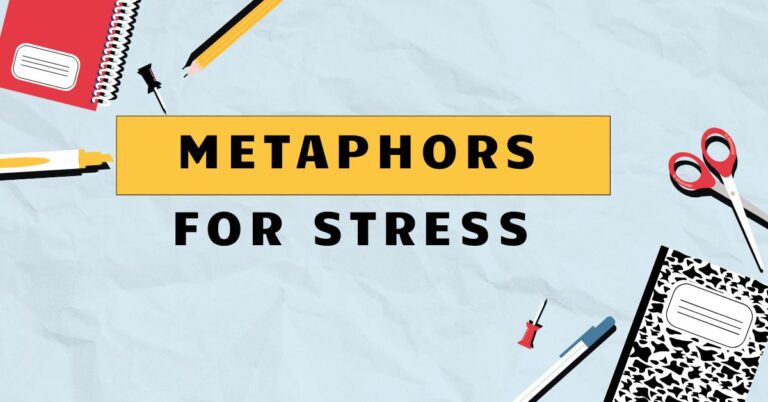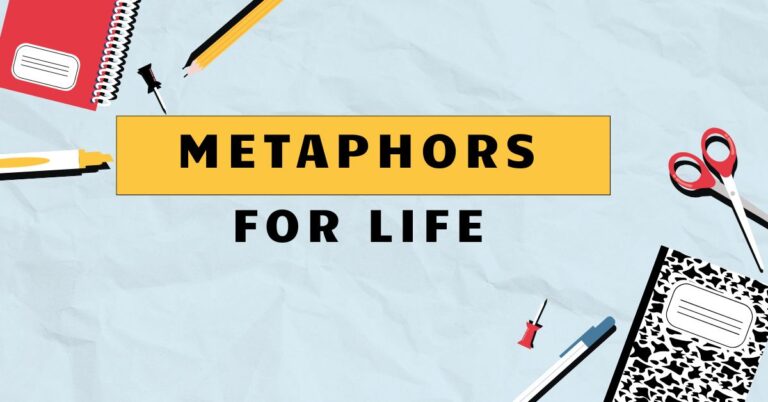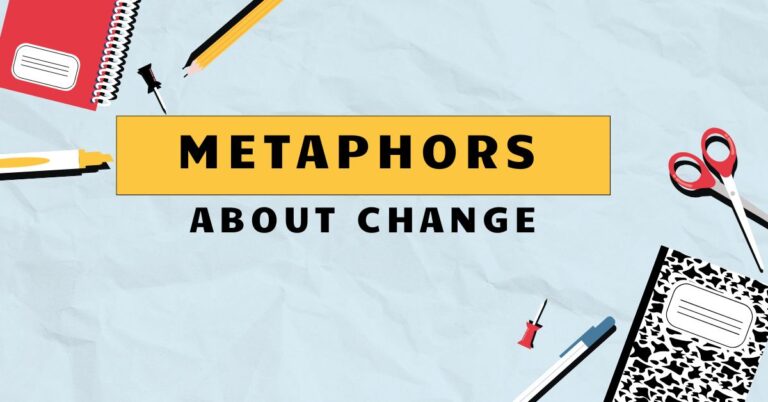45 Metaphors for Sky: A Comprehensive Guide to Figurative Language
Understanding metaphors is crucial for mastering English, as they add depth and color to our language. Focusing on metaphors for “sky” provides a fascinating lens through which to explore this literary device.
This article will benefit English language learners, writers seeking to enhance their descriptive skills, and anyone interested in the art of figurative language. By examining the diverse ways the sky is metaphorically represented, we can enrich our comprehension and appreciation of English.
Table of Contents
- Introduction
- Definition of Metaphor
- Structural Breakdown of Metaphors
- Types of Sky Metaphors
- Examples of Sky Metaphors
- Usage Rules for Metaphors
- Common Mistakes with Metaphors
- Practice Exercises
- Advanced Topics in Metaphorical Usage
- Frequently Asked Questions
- Conclusion
Definition of Metaphor
Ametaphoris a figure of speech that directly compares two unlike things without using “like” or “as.” It asserts that one thingisanother, creating a vivid and often surprising connection in the reader’s mind. The purpose of a metaphor is to transfer qualities or characteristics from one thing to another, enhancing understanding and creating imagery.
Metaphors are essential tools in literature, poetry, and everyday conversation, adding depth and complexity to our communication.
Metaphors function by establishing a relationship between thetenor(the subject being described) and thevehicle(the object or idea used to represent the subject). In the context of describing the sky, the sky is the tenor, and the vehicle could be anything from a canvas to an ocean.
The effectiveness of a metaphor lies in its ability to evoke a specific feeling, idea, or image through this comparison.
Metaphors can appear in various contexts, ranging from formal writing to casual speech. Their impact depends on the audience and the purpose of the communication.
A well-crafted metaphor can make a complex idea more accessible or provide a fresh perspective on a familiar subject. Understanding metaphors is key to interpreting literature and expressing oneself creatively.
Structural Breakdown of Metaphors
The structure of a metaphor involves two main components: thetenorand thevehicle. The tenor is the subject to which the metaphor refers.
The vehicle is the image, idea, or concept that is used to represent the tenor. The relationship between the tenor and vehicle creates the metaphorical meaning.
For example, in the metaphor “The sky is a canvas,” the tenor is the “sky,” and the vehicle is “canvas.” The shared characteristic being highlighted is the vastness and potential for artistic expression. Understanding these components allows us to deconstruct and analyze the meaning behind any metaphor.
The effectiveness of a metaphor often depends on theimplied similaritybetween the tenor and the vehicle. This similarity may not be immediately obvious but becomes clear upon reflection.
The more unexpected or creative the connection, the more impactful the metaphor can be. Recognizing the structural elements of a metaphor helps in both its interpretation and creation.
Types of Sky Metaphors
Metaphors for the sky can be categorized based on the qualities they emphasize. These categories include color, emotion, texture, size, and weather.
Each type offers a unique perspective on the sky, highlighting different aspects of its appearance and impact.
Color-Based Metaphors
Color-based metaphors use colors to describe the sky, emphasizing its visual appearance. These metaphors often evoke specific moods or feelings associated with particular colors.
For example, “The sky was a sea of blue” emphasizes the vastness and depth of the blue color. Another example, “The sky was a fiery orange” highlights the intensity and warmth of the sunset.
Emotional Metaphors
Emotional metaphors attribute human emotions to the sky, creating a sense of connection between nature and human experience. These metaphors can convey feelings of peace, sadness, joy, or anger.
For instance, “The sky wept tears of rain” personifies the sky with sadness. Another example, “The sky smiled with sunshine” attributes joy to the clear and bright weather.
Texture Metaphors
Texture metaphors focus on the visual or imagined texture of the sky, describing it as smooth, rough, soft, or hard. These metaphors can enhance the sensory experience of observing the sky.
For example, “The sky was a velvet curtain” describes a smooth, dark sky. Another example, “The sky was a patchwork quilt of clouds” emphasizes the varied and fragmented appearance of the clouds.
Size and Scale Metaphors
Size and scale metaphors emphasize the vastness or smallness of the sky, often comparing it to other large or small objects. These metaphors can convey a sense of awe or insignificance.
For example, “The sky was an endless ocean” highlights its vastness. Another example, “The sky was a shallow bowl” suggests a limited or confined space.
Weather-Related Metaphors
Weather-related metaphors use weather phenomena to describe the sky, emphasizing its dynamic and changing nature. These metaphors can convey a sense of drama, tranquility, or uncertainty.
For example, “The sky was a storm of emotions” connects turbulent weather with inner turmoil. Another example, “The sky was a gentle breeze” describes a calm and peaceful atmosphere.
Examples of Sky Metaphors
The following tables provide extensive examples of metaphors for the sky, categorized by type. Each example illustrates how different qualities can be attributed to the sky through figurative language.
The table below showcases color-based metaphors for the sky, highlighting how different hues evoke distinct emotions and imagery.
| Metaphor | Explanation |
|---|---|
| The sky was a canvas of azure. | Emphasizes the vibrant blue color, like an artist’s canvas. |
| The sky was a bruised purple. | Suggests a dark, stormy sky, conveying a sense of foreboding. |
| The sky was a golden tapestry. | Highlights the warm, rich colors of sunrise or sunset. |
| The sky was a silver screen. | Implies a bright, clear sky, reflecting light. |
| The sky was an inky blackness. | Describes a dark, starless night sky. |
| The sky was a blood orange sunset. | Combines color and time of day to create a vivid image. |
| The sky was a milky white expanse. | Suggests a hazy, overcast sky. |
| The sky was a jade canopy. | Evokes a sense of lush, green color, unusual but striking. |
| The sky was a ruby glow. | Highlights a deep, rich red hue, often seen during sunrise/sunset. |
| The sky was a sapphire dome. | Emphasizes the precious, gem-like quality of a clear blue sky. |
| The sky was a charcoal sketch. | Suggests a muted, grey sky, perhaps before a storm. |
| The sky was a lavender dream. | Evokes a soft, pastel-colored sky at dawn or dusk. |
| The sky was a bronze shield. | Highlights a metallic, shimmering effect, often seen through haze. |
| The sky was a rose-tinted mirror. | Suggests a delicate, romantic atmosphere. |
| The sky was a turquoise jewel. | Emphasizes a vibrant, blue-green color, reminiscent of tropical waters. |
| The sky was a lemon chiffon. | Evokes a light, airy, pale yellow sky. |
| The sky was a copper kettle. | Highlights a warm, metallic hue, often seen during industrial sunsets. |
| The sky was a periwinkle haze. | Suggests a soft, blue-violet sky, often hazy or misty. |
| The sky was an emerald veil. | Emphasizes a rich, green color, perhaps seen through dense foliage. |
| The sky was a cobalt ocean. | Highlights a deep, intense blue, like a vast sea. |
| The sky was a tangerine peel. | Evokes a bright, citrusy orange color, often seen at sunrise/sunset. |
| The sky was a peach blossom. | Suggests a soft, delicate pink color, reminiscent of spring. |
| The sky was a silver lining. | Emphasizes hope and optimism, even in dark times. |
The table below showcases emotional metaphors for the sky, demonstrating how the sky can be personified with human feelings.
| Metaphor | Explanation |
|---|---|
| The sky was a grieving widow. | Conveys sadness and sorrow, often associated with dark, stormy weather. |
| The sky was a laughing child. | Suggests joy and happiness, often associated with bright, sunny weather. |
| The sky was an angry giant. | Highlights power and rage, often associated with thunderstorms. |
| The sky was a peaceful monk. | Implies calmness and serenity, often associated with clear, blue skies. |
| The sky was a worried mother. | Suggests concern and protectiveness, often associated with overcast weather. |
| The sky was a playful dancer. | Conveys lightness and movement, often associated with breezy weather. |
| The sky was a silent observer. | Implies neutrality and detachment, often associated with unchanging weather. |
| The sky was a weary traveler. | Suggests exhaustion and fatigue, often associated with long, drawn-out storms. |
| The sky was a hopeful dreamer. | Conveys optimism and aspiration, often associated with clear skies after rain. |
| The sky was a jealous lover. | Implies possessiveness and intensity, often associated with dramatic weather changes. |
| The sky was a brooding artist. | Suggests introspection and creativity, often associated with cloudy, atmospheric weather. |
| The sky was a carefree spirit. | Conveys freedom and joy, often associated with clear, sunny days. |
| The sky was a stoic guardian. | Implies resilience and strength, often associated with enduring weather patterns. |
| The sky was a restless wanderer. | Suggests constant change and movement, often associated with shifting weather conditions. |
| The sky was a nostalgic memory. | Conveys a sense of longing and remembrance, often associated with familiar weather patterns. |
| The sky was an impatient student. | Implies eagerness and anticipation, often associated with rapidly changing weather. |
| The sky was a contented elder. | Suggests wisdom and peace, often associated with calm, settled weather. |
| The sky was a curious child. | Conveys wonder and inquisitiveness, often associated with unpredictable weather patterns. |
| The sky was a determined athlete. | Implies perseverance and strength, often associated with challenging weather conditions. |
| The sky was a grateful recipient. | Suggests appreciation and thankfulness, often associated with favorable weather. |
| The sky was a vindictive tyrant. | Conveys cruelty and oppression during severe storms. |
| The sky was an empathetic listener. | Implies understanding and support during calm weather. |
| The sky was a euphoric dancer. | Highlights joy and celebration with vibrant sunsets. |
The table below showcases texture metaphors for the sky, illustrating how the sky can be described using tactile qualities.
| Metaphor | Explanation |
|---|---|
| The sky was a cotton blanket. | Suggests softness and comfort, often associated with fluffy clouds. |
| The sky was a gritty sandpaper. | Implies roughness and discomfort, often associated with dusty or polluted skies. |
| The sky was a smooth silk. | Conveys elegance and smoothness, often associated with clear, blue skies. |
| The sky was a wrinkled parchment. | Suggests age and complexity, often associated with textured clouds. |
| The sky was a velvety curtain. | Implies darkness and richness, often associated with night skies. |
| The sky was a pebbled beach. | Conveys a sense of unevenness and texture, often associated with scattered clouds. |
| The sky was a corrugated tin roof. | Suggests harshness and irregularity, often associated with stormy skies. |
| The sky was a fluffy meringue. | Implies lightness and sweetness, often associated with puffy clouds. |
| The sky was a frosted glass. | Suggests a hazy, unclear texture, often associated with fog or mist. |
| The sky was a woven tapestry. | Implies complexity and detail, often associated with intricate cloud formations. |
| The sky was a crumpled paper. | Conveys a sense of disarray and chaos, often associated with turbulent weather. |
| The sky was a polished stone. | Suggests smoothness and hardness, often associated with clear, cold skies. |
| The sky was a furry rug. | Implies warmth and comfort, often associated with thick cloud cover. |
| The sky was a rugged mountain range. | Conveys strength and irregularity, often associated with dramatic cloud formations. |
| The sky was a shimmering mirage. | Suggests illusion and distortion, often associated with heat haze. |
| The sky was a brittle ice sheet. | Implies fragility and coldness, often associated with winter skies. |
| The sky was a spongy foam. | Conveys lightness and absorbency, often associated with light cloud cover. |
| The sky was a gnarled tree bark. | Suggests age and resilience, often associated with enduring weather patterns. |
| The sky was a liquid mercury. | Implies fluidity and reflectivity, often associated with shimmering skies. |
| The sky was a bumpy road. | Conveys a sense of difficulty and unevenness, often associated with turbulent weather. |
The table below showcases size and scale metaphors for the sky, highlighting its immensity or confinement.
| Metaphor | Explanation |
|---|---|
| The sky was an endless abyss. | Emphasizes the vast, unfathomable depth of the sky. |
| The sky was a tiny peephole. | Suggests a limited, restricted view of the sky. |
| The sky was a boundless universe. | Highlights the infinite nature of the sky. |
| The sky was a cramped attic. | Implies a confined, oppressive space. |
| The sky was a colossal dome. | Conveys a sense of grandeur and enclosure. |
| The sky was a narrow alleyway. | Suggests a restricted, claustrophobic view. |
| The sky was a vast amphitheater. | Highlights the expansive, open nature of the sky. |
| The sky was a miniature snow globe. | Implies a small, contained world. |
| The sky was a boundless playground. | Conveys freedom and endless possibilities. |
| The sky was a pocket-sized mirror. | Suggests a limited, personal reflection. |
| The sky was an infinite canvas. | Highlights the endless potential for creativity. |
| The sky was a confined cage. | Implies restriction and lack of freedom. |
| The sky was a gargantuan stadium. | Conveys a sense of vastness and spectacle. |
| The sky was a thimble-sized universe. | Suggests a minuscule, insignificant space. |
| The sky was a limitless ocean. | Highlights the boundless nature of the sky. |
| The sky was a shoebox-sized display. | Implies a small, limited presentation. |
| The sky was a gigantic tapestry. | Conveys a sense of grandeur and intricate detail. |
| The sky was a dollhouse ceiling. | Suggests a tiny, artificial space. |
| The sky was an immeasurable expanse. | Highlights the limitless nature of the sky. |
| The sky was a postage stamp view. | Implies a minimal, restricted perspective. |
The table below showcases weather-related metaphors for the sky, emphasizing the dynamic nature of the sky through various weather phenomena.
| Metaphor | Explanation |
|---|---|
| The sky was a hurricane of emotions. | Conveys intense, turbulent feelings. |
| The sky was a gentle drizzle of peace. | Suggests calmness and tranquility. |
| The sky was a thunderstorm of rage. | Highlights explosive anger and fury. |
| The sky was a sunny disposition. | Implies happiness and optimism. |
| The sky was a blizzard of confusion. | Conveys overwhelming uncertainty. |
| The sky was a light breeze of hope. | Suggests a gentle, encouraging feeling. |
| The sky was a tornado of chaos. | Highlights destructive disorder. |
| The sky was a rainbow of promises. | Implies hope and future possibilities. |
| The sky was a drought of inspiration. | Conveys a lack of creativity and motivation. |
| The sky was a flood of memories. | Suggests an overwhelming influx of recollections. |
| The sky was a heatwave of passion. | Highlights intense desire and excitement. |
| The sky was a snowfall of silence. | Implies peaceful quiet and stillness. |
| The sky was a monsoon of tears. | Conveys intense sadness and grief. |
| The sky was a sun shower of joy. | Suggests unexpected happiness and delight. |
| The sky was a hailstorm of criticism. | Highlights harsh, negative feedback. |
| The sky was a light fog of uncertainty. | Implies mild confusion and doubt. |
| The sky was a cyclone of change. | Conveys rapid, transformative events. |
| The sky was a dewdrop of hope. | Suggests a small, delicate promise. |
| The sky was a sandstorm of obstacles. | Highlights numerous challenges and difficulties. |
| The sky was a drizzle of nostalgia. | Implies a gentle longing for the past. |
Usage Rules for Metaphors
Using metaphors effectively requires understanding certain guidelines. First, ensure the comparison between the tenor and vehicle is clear and logical.
The connection should resonate with the audience and enhance their understanding.
Second, avoidmixed metaphors, which combine unrelated images and create confusion. For example, “He was skating on thin ice and playing with fire” is a mixed metaphor because skating on thin ice and playing with fire are unrelated activities.
A better metaphor would be, “He was skating on thin ice,” or “He was playing with fire,” each used separately.
Third, be mindful ofclichés. Overused metaphors, such as “raining cats and dogs,” can lose their impact.
Strive for originality and creativity in your metaphorical expressions. A fresh and unexpected metaphor can captivate the reader and leave a lasting impression.
Fourth, consider the context and audience. A metaphor that works well in one situation may not be appropriate in another.
Tailor your metaphors to suit the specific context and the intended audience. This ensures that the metaphor is both effective and appropriate.
Common Mistakes with Metaphors
One common mistake is usingliteral languageinstead of figurative language. For example, saying “The sky is blue” is a literal statement, not a metaphor.
A metaphorical statement would be “The sky is a blue ocean.”
Another mistake is creatingunclear or confusing comparisons. If the connection between the tenor and vehicle is not evident, the metaphor will fail to communicate its intended meaning.
Ensure that the comparison is logical and easily understood.
A further mistake involves usingtoo many metaphorsin a short space. Overusing metaphors can overwhelm the reader and detract from the overall impact.
Use metaphors sparingly and strategically to maximize their effectiveness.
The table below highlights some common mistakes with metaphors, providing both incorrect and correct examples.
| Incorrect | Correct | Explanation |
|---|---|---|
| The sky is blue. | The sky is a blue blanket. | The first statement is literal; the second is a metaphor. |
| The sky is running. | The sky is a river flowing. | “Running” is too literal for the sky; “river flowing” creates a more vivid image. |
| He was a fish out of water, but he also had his ducks in a row. | He was a fish out of water. | Avoid mixed metaphors; stick to one clear comparison. |
| The sky was like a blanket. | The sky was a blanket. | Using “like” or “as” makes it a simile, not a metaphor. |
| The sky is a vast, blue, high, and wide space. | The sky is a boundless ocean. | The first statement is descriptive but lacks figurative power; the second is concise and impactful. |
Practice Exercises
Test your understanding of metaphors with the following exercises. Identify the metaphors in each sentence and explain their meaning.
Alternatively, create your own metaphors based on given prompts.
Exercise 1: Identify the Metaphor
| Question | Answer |
|---|---|
| 1. The sky was a symphony of colors. | Metaphor: The sky was a symphony. Explanation: Compares the sky to a musical performance, highlighting its harmonious beauty. |
| 2. The sky wept tears of rain. | Metaphor: The sky wept tears. Explanation: Personifies the sky, attributing human emotion to the rain. |
| 3. The sky was a canvas painted with stars. | Metaphor: The sky was a canvas. Explanation: Compares the sky to an artist’s canvas, emphasizing its vastness and beauty. |
| 4. The sky was an angry beast. | Metaphor: The sky was an angry beast. Explanation: Personifies the sky with anger, often associated with storms. |
| 5. The sky was a gentle embrace. | Metaphor: The sky was a gentle embrace. Explanation: Conveys comfort and warmth, often associated with sunny days. |
| 6. The sky was a river of light. | Metaphor: The sky was a river. Explanation: Highlights the flowing, continuous nature of sunlight. |
| 7. The sky was a garden of clouds. | Metaphor: The sky was a garden. Explanation: Emphasizes the beauty and variety of clouds. |
| 8. The sky was a battlefield of storms. | Metaphor: The sky was a battlefield. Explanation: Conveys the intensity and conflict of storms. |
| 9. The sky was a museum of wonders. | Metaphor: The sky was a museum. Explanation: Highlights the awe-inspiring and diverse elements of the sky. |
| 10. The sky was a stage for the sun. | Metaphor: The sky was a stage. Explanation: Emphasizes the sun’s prominent role and performance in the sky. |
Exercise 2: Create a Metaphor
| Prompt | Example Answer |
|---|---|
| 1. Describe the sky during a sunset. | The sky was a melting popsicle of orange and pink. |
| 2. Describe the sky during a thunderstorm. | The sky was a roaring dragon breathing fire and fury. |
| 3. Describe the sky on a clear, sunny day. | The sky was a sapphire jewel sparkling with light. |
| 4. Describe the night sky filled with stars. | The sky was a black velvet cloak adorned with diamonds. |
| 5. Describe the sky during a foggy morning. | The sky was a cotton ball swallowing the world. |
| 6. Describe the sky during a windy afternoon. | The sky was a restless spirit, always in motion. |
| 7. Describe the sky during a lunar eclipse. | The sky was a darkened stage, where the moon played hide-and-seek. |
| 8. Describe the sky just after a rainstorm. | The sky was a clean slate, washed anew by the rain. |
| 9. Describe the sky during a meteor shower. | The sky was a celestial fireworks display. |
| 10. Describe the sky when it’s full of dark, heavy clouds. | The sky was a leaden weight pressing down on the world. |
Advanced Topics in Metaphorical Usage
Advanced learners can explore extended metaphors, which are metaphors that are developed over several lines or paragraphs. These can add depth and complexity to writing, creating a richer and more nuanced understanding.
Another advanced topic is the use of conceits, which are elaborate and often surprising metaphors that are central to a poem or literary work. Conceits can be challenging to create and interpret but can also be highly rewarding.
Additionally, understanding the cultural and historical contexts of metaphors can enhance their appreciation. Metaphors often draw on shared cultural knowledge and experiences, and understanding these references can deepen the reader’s understanding.
Frequently Asked Questions
- What is the difference between a metaphor and a simile?
A metaphor directly compares two unlike things, stating that one thing is another. A simile uses “like” or “as” to make a comparison, suggesting a similarity rather than an identity. For example, “The sky is a canvas” is a metaphor, while “The sky is like a canvas” is a simile.
- How can I improve my ability to create effective metaphors?
Practice observing the world around you and identifying connections between seemingly unrelated things. Read widely and pay attention to how other writers use metaphors. Experiment with different combinations of tenor and vehicle to find the most impactful and original expressions. The more you practice, the better you will become at crafting effective metaphors.
- What are some common pitfalls to avoid when using metaphors?
Avoid using clichés, mixed metaphors, and unclear comparisons. Ensure that the connection between the tenor and vehicle is logical and easily understood. Use metaphors sparingly and strategically to maximize their impact. Be mindful of the context and audience to ensure that the metaphor is both effective and appropriate.
- Can a metaphor be too complex?
Yes, a metaphor can be too complex if it is difficult to understand or if it detracts from the overall meaning. A good metaphor should enhance understanding, not obscure it. If a metaphor requires too much explanation, it may be too complex for the intended audience. Strive for clarity and simplicity in your metaphorical expressions.
- How do metaphors contribute to writing?
Metaphors add depth, color, and imagery to writing. They can make complex ideas more accessible, provide fresh perspectives on familiar subjects, and evoke specific emotions or feelings in the reader. Effective metaphors can captivate the reader and leave a lasting impression.
- How do I identify a metaphor in a text?
Look for statements that assert that one thing is another, especially when the two things are not literally the same. Pay attention to comparisons that do not use “like” or “as.” Consider the context and ask yourself what qualities or characteristics are being transferred from one thing to another. If you can identify a clear comparison and a transfer of meaning, you have likely found a metaphor.
- Are metaphors only used in literature and poetry?
No, metaphors are used in various contexts, including everyday conversation, speeches, and advertising. They are a versatile tool for enhancing communication and expressing ideas in a creative and impactful way. While they are commonly found in literature and poetry, their use extends far beyond these genres.
- What’s the role of context in understanding metaphors?
Context is crucial. The surrounding text, the speaker’s intent, and the audience’s knowledge all contribute to how a metaphor is understood. A metaphor can have different meanings depending on the situation. Always consider the context to accurately interpret the intended meaning of a metaphor.
- How can metaphors be used to evoke emotion?
Metaphors can evoke emotion by associating the subject with something that already carries emotional weight. For example, comparing the sky to a “grieving widow” immediately creates a sense of sadness. By carefully choosing the vehicle of the metaphor, writers can tap into pre-existing emotional associations.
- What is an extended metaphor, and how is it used?
An extended metaphor is a metaphor that is developed over several lines, paragraphs, or even an entire work. It allows for a more detailed and nuanced comparison, creating a richer and more complex understanding. Extended metaphors are often used to explore complex themes or ideas in depth.
Conclusion
Mastering metaphors is a valuable skill for anyone seeking to enhance their English language proficiency. By understanding the definition, structure, types, and usage rules of metaphors, learners can improve their reading comprehension, writing skills, and overall communication abilities.
Exploring metaphors for the sky provides a rich and engaging way to practice
and appreciate figurative language.
Through the examples and exercises provided in this guide, you can develop your ability to identify, interpret, and create effective metaphors. Remember to avoid common mistakes, such as using clichés or mixed metaphors, and to always consider the context and audience.
With practice and attention to detail, you can unlock the power of metaphors and elevate your language skills to new heights. Whether you are a student, a writer, or simply someone who loves language, the world of metaphors offers endless opportunities for exploration and discovery.

